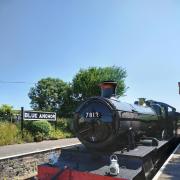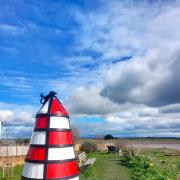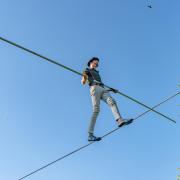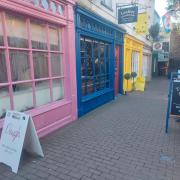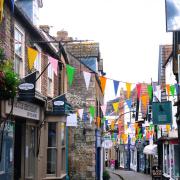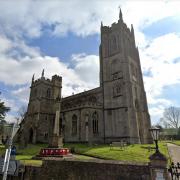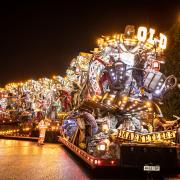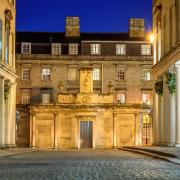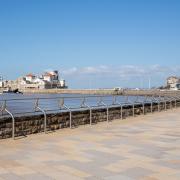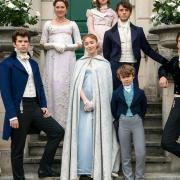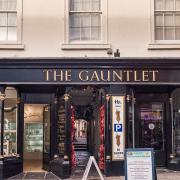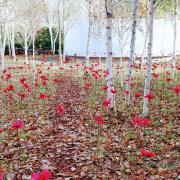Simone Stanbrook goes on a journey through this vibrant, creative and historic part of South Somerset and discovers some lesser known facts about it
1. Despite being one of the smallest towns in England, smaller than some villages, with a population of barely 3,000 Bruton has an abundance of fascinating shops, restaurants and a rich arts culture. They are all nestling in the valley of the River Brue, which reputedly derives its name from the Celtic word 'briw', meaning (approximately) 'vigorous' or 'brisk'.
2. Hauser and Wirth, Bruton's world-class gallery and arts centre, has its Somerset home in a restored 18th century farm but, beyond Bruton, has galleries in New York, Los Angeles, London and Zurich. It puts Bruton firmly on the map of high-class art destinations. Its landscaped gardens, designed by the internationally renowned Piet Oudolf, are a work of art in themselves.
3. The ancient dovecote that overlooks Bruton stands in what was once the deer park of Bruton Abbey. It may once have served as a watchtower - evidence of a fireplace inside suggests it was used by people needing warmth before being converted for avian use around 1780. It has holes for 200 birds, the occupants being kept, historically, as a source of food and manure.
4. Bruton is home to the Mill on the Brue, an award-winning, environmentally-conscious and family-run outdoor activity centre. This not-for-profit organisation offers an enormous range of facilities for both children and adults. Ranging from residential school trips through to 'A Dangerous Day 4 Dads' and Team Management Training, there is a wealth of outdoor fun to be had. A place to actively restore well-being.
5. Bruton has three boarding schools: Bruton School for Girls, Sexey's School (named after a local landowner of the 16th - 17th century) and King's School. The latter has some remarkable history, having once owned a copy of the 1297 Inspeximus issue of Magna Carta, discovered in the school's archives in 1936. How it came to the school is uncertain but the then head of history reputedly kept it safe under his bed during the war. In 1952 the governors sold it through Sotheby's to the Australian government, thus boosting school funds by a welcome and substantial (for the times) £12,500. The Charter now resides in Canberra's parliament buildings.
6. Fossils found in Bruton's gardens tell the story of an ancient landscape that predates human habitation of the area. The town is built over a Jurassic outcrop but the parish of Bruton also includes the hamlets of Redlynch and evocatively-named Wyke Champflower.
7. Bruton has an abundance of venerable buildings including the architectural gem, Sexey's Hospital, founded in 1638 for 'the relief and maintenance of elderly persons of honest life and good reputation'. Today these almshouses still provide sheltered accommodation for up to 30 people. Another old building, but one that has seen a good deal of change in its function, is the converted At the Chapel. Between the building's deconsecration and resurrection to its current role as restaurant and hotel, part of it saw life as a recording studio used, allegedly, by Genesis and Tangerine Dream.
8. Celebrated American author, John Steinbeck, loved Somerset, having a fascination for Arthurian legend. He spent time writing in Bruton and the museum has a desk once owned by him. Before he died Steinbeck is said to have said of Bruton 'the peace I have dreamed about is here'.
9. Bruton's parish church is unusual for having two towers and the oldest dated bell in Somerset (1528). It is on the site of one of the oldest churches in the country, which was founded in the seventh century by King Ine of Wessex. This older building later became part of Bruton Abbey. After the Dissolution of the Monasteries, Bruton Abbey came into the ownership of Sir Maurice Berkeley, Henry VIII's standard bearer. A mansion was built on the site, incorporating some of the former ecclesiastical buildings. This was demolished in 1786 by the Hoare family who had by then bought the estate.
10. The traditional English folk song, The Bramble Briar, has many versions and titles, one being In Bruton Town. It is a gory murder ballad that has its origins in medieval literature and tells of two brothers from a noble Bruton family who killed a servant with whom their sister had fallen in love. Bruton today is far more civilised!
Bruton: The property market
Its vibrancy and interest make Bruton an attractive place to live. Average house prices here have risen more than seven per cent in the past year, with an increase of more than 25 per cent in the past ten years. A terraced house may cost in the region of £260,000, whilst the average cost of a detached house is around £470,000 (figures from 2017).




